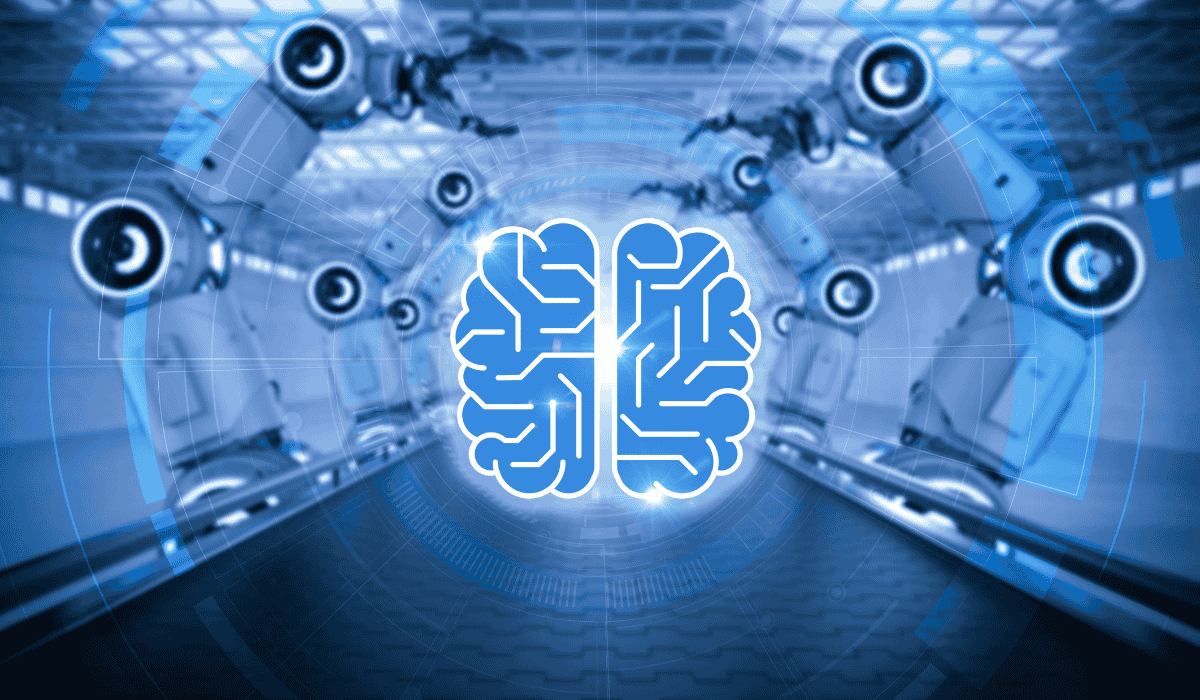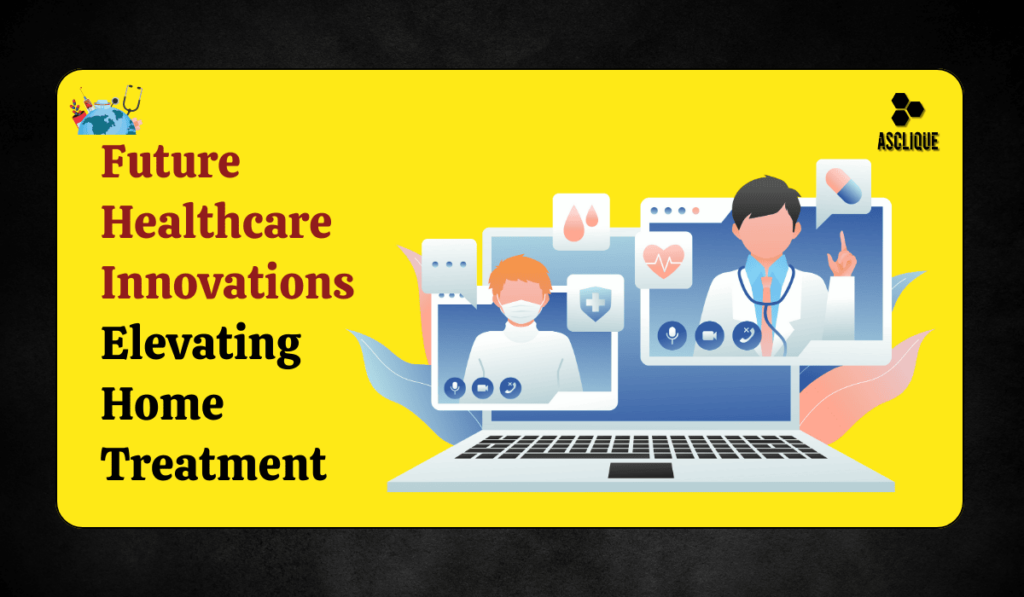The healthcare industry is undergoing a paradigm shift, and technology is the prime enabler of increased availability and effectiveness in healthcare. Among the most striking developments is home-based care, with latest technologies allowing patients to enjoy best-of-breed medical treatment without having to make hospital trips. Innovation in cutting-edge healthcare technologies ranging from telemedicine and artificial intelligence to robotics and blockchain is transforming home-based patient care. Here, we will describe how future healthcare technology is elevating at-home care, making care efficient, convenient, and patient-centric.
Telemedicine & Remote Monitoring
What Is Telemedicine?
Telemedicine is remote medical care using video conferencing, phone, and the internet. Patients consult physicians, receive prescriptions, and receive medical guidance without visiting a hospital or clinic.
How Remote Monitoring Works
Remote monitoring involves the utilization of wearable and implantable sensors to track the vital signs and health of a patient in real time. The sensors can report directly to medical staff so that action can be taken accordingly at the appropriate time if there is any abnormality.
Benefits of Telemedicine & Remote Monitoring for Home Care
- Accessibility: Patients living in remote or underprivileged areas can access doctors without having to travel long distances.
- Real-Time Health Monitoring: Continuous monitoring of heart rate, oxygen level, and blood sugar detects any problem with one’s health at the earliest.
- Fewer Hospital Admissions: Chronically ill patients like patients with high blood pressure or diabetes are treated round the clock without hospital visits so frequently.
- Enhanced Emergency Response: When the patient’s vital signs are in distress, automated alerts inform physicians and caregivers to respond immediately.
A patient having heart disease can wear an ECG monitor, which monitors his heart rate and identifies any abnormality. If it detects any abnormality, the monitor sends out an alert to the doctor so that he can give instant medication.
AI & Machine Learning in Home Healthcare

What Is AI in Healthcare?
Artificial Intelligence (AI) and machine learning process massive patient data to identify diseases, recommend treatment, and forecast health risks. AI programs can help doctors diagnose conditions quicker and more accurately.
How AI Enhances Home Care
- Early Disease Detection: AI-driven apps scan symptoms and recommend potential diagnoses prior to a patient consulting a doctor.
- Personalized Treatment Plans: Machine learning algorithms examine a patient’s background, habits, and genes to design tailored treatment plans.
- Virtual Health Assistants: AI-based chatbots provide immediate responses to health-related questions, freeing some of the load from physicians.
Example
Software like SkinVision scan pictures of the skin for early-stage skin cancer signs and prompt patients to see a doctor before the condition worsens.
Smart Home Health Devices
Smart home healthcare devices integrate smart technologies such as artificial intelligence (AI) and automation to improve home care. Examples of the devices include AI-based medicine dispensers, voice-operated health attendants, and smart beds that track sleeping patterns and movement. Patients use these technologies to control their health status with minimal human interference.
How Smart Health Devices Improve Home Care
- Automated Drug Reminders: Intelligent pill boxes alert patients when to take medication, allowing them to stick to treatment schedules. This eliminates missed doses and increases the effectiveness of treatment.
- Voice-Controlled Health Assistants: Voice-operated devices such as Amazon Alexa and Google Assistant can alert elderly or disabled patients to medication, doctor appointments, and health check-ups every day, increasing access to care.
- Monitoring Health and Sleep: Intelligent beds and wearable technology monitor sleeping habits, heart rate, and other essential signs. The data is monitored to display abnormalities to physicians to enable adjustment of the plans based on them.
Example
Hero, which is a clever pill box, sorts and distributes pills automatically when it is the time so that patients adhere to their medication plan. This device reduces the potential for missed medication, particularly in patients with over one prescription.
Internet of Medical Things (IoMT)
Internet of Medical Things (IoMT) is a connected network of medical devices that receive, analyze, and communicate medical information. A few examples are intelligent inhalers, ECG monitors, insulin pumps, and other wearables monitoring patients’ health in real time. IoMT is changing home healthcare through the presence of real-time information and remote monitoring, i.e., more proactive and efficient medical care.
How IoMT Enhances In-Home Care
- Real-Time Sharing of Patient Data: IoMT devices share patient data in real-time to healthcare professionals such that any deviation can be addressed in real-time.
- Improved Chronic Disease Management: Diabetic, cardiac, and respiratory patients can be managed by continuous monitoring, reducing the frequency of hospitalization.
- Automated Monitoring of Health: Smart sensors continuously monitor the parameters of the patient’s health, generating comprehensive reports to be used by doctors while treating and diagnosing the patient.
Example
Apple Watch has an ECG feature that identifies irregular heartbeat and notifies the users of probable health threats. The early warning system allows the users to access treatment before the complications develop, offering healthcare outcomes in general.
Home Healthcare Robotics & Automation
What are Healthcare Robots?
Robotics technologies enable patient transport, rehabilitation, and even support in companionship for disabled and elderly individuals.
How Robots Enhance In-Home Care
- Robotic Caregivers: Help patients with everyday activities like dressing, eating, and mobility when disabled.
- Rehabilitation Robots: Help stroke or injury patients gain strength by helping them perform therapy exercises.
- Companion Robots: Give emotional care to the elderly living alone and minimize loneliness and mental illness problems.
Example
Paro, a therapeutic robot seal, gives comfort and emotional care to dementia patients, which minimizes anxiety and stress.
3D Printing for Personalized Medicine
3D printing is revolutionizing medicine in order to allow for personalized medical treatments such as prosthetics, implants, and printed tissues. Homecare is also improved with 3D printing since it provides customized treatment based on the patient’s personalized needs.
How 3D Printing Facilitates Homecare
- Personalized Prosthetics: Prosthetics created by 3D printing are individualized to the patient, giving them more mobility and comfort as amputees.
- Personalized Medicine: The 3D-printed medications can be tailored to precise dosages and makeup, thereby making the treatment process optimal.
- Bio-Printed Tissues: Researchers are currently printing bio-printed skin and tissues, and these can treat patients with burns and chronic wounds at home.
Example
Researchers have 3D-printed human skin for burn patients, showcasing the potential of the future technology in allowing much simpler at-home treatment and wound healing.
Blockchain for Secure Health Records
Blockchain technology revolutionizes the healthcare industry with secure, tamper-resistant storage of patients’ health records. It ensures enhanced data privacy, prevents fraud, and facilitates easy sharing of information between healthcare professionals, making at-home care safer and more convenient.
How Blockchain Enhances Home Care
- Data Protection: Safeguards personal medical data from cyber attacks and abuse.
- Efficient Health Record Exchange: Patients may securely exchange medical records with caregivers and physicians without breaching the privacy threshold.
- Protection against fraud: Protects the integrity of medical records to prevent fraud and identity theft.
Example
MedRec is an application that runs on a blockchain-based healthcare record system and lets patients have ownership of their medical records and their access, giving them improved security and privacy during home care.
Conclusion
Next-generation health technology is simplifying home care, making it more efficient, accessible, and personalized. Telemedicine, AI-based diagnosis, smart home devices, IoMT, robots, 3D printing, and blockchain are some of the technologies that are transforming the way patients are being medically treated.
With increasingly advanced such technologies, home care will increasingly become the new standard for treating the majority of medical conditions, ending reliance on hospitals and improving patient comfort. The era of medicine has finally arrived, and the breakthroughs are making the way for a more networked, fluid, and patient-centered way of practicing medicine.
FAQs
How does telemedicine enhance home healthcare?
Telemedicine allows patients to consult with physicians through video calls, phone, or web platforms in the home. Telemedicine increases convenience, reduces hospital outpatient clinic visits, and facilitates real-time health monitoring using wearable gadgets, with instant medical interventions.
How does AI support home healthcare?
AI allows for instant diagnosis of diseases, patient-specific treatment advice, and online health care. AI-based chatbots provide instant medical guidance, whereas machine learning platforms learn health information to predict potential health hazards and recommend appropriate interventions.
In what ways do healthcare devices in a smart home improve patient care?
Smart home health appliances like AI medication dispensers, voice assistant gadgets, and smart beds automate the tracking of health. They provide reminders for medications, book the doctor’s appointment, and track sleep and vital signs, enhancing overall health care management.
How is blockchain used for security of health records?
Blockchain provides a tamper-evident and secure method of maintaining patient health records. It maintains data confidential, does not provide any unapproved access, and allows for easy communication of medical records between healthcare providers while maintaining patient data safe from cyber attacks.
Where is the position of robotics in home care?
Robot technology is used in daily life, rehabilitation, and emotional support. Robotic caregivers aid individuals with mobility impairment, rehabilitation robots aid physical rehabilitation, and companion robots provide emotional companionship to the elderly or lonely people.

